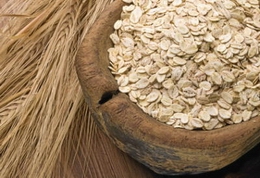
You dipped your spoon into that hearty bowl of oats, nuts and dried fruit in the same way you might slip on a third layer of clothing on a cold morning. Granola has always signified back-to-the-earthiness, the whole-grains ethos that sprouted out of American counterculture in the 1960s and '70s - so much so that its very name became a synonym for hippie living.
Granola could be many things, from a dorm-room staple to a parfait topping, but it was decidedly not chic.
If you're still talking about it that way, though, take a closer look at the cereal aisle in your supermarket, or the menu at that innovative gastropub around the corner. Granola has traded in the bulky sweater for a little black dress. All over the country, small-batch entrepreneurs see granola as a booming growth sector, while chefs view it as an elegant and wide-open canvas for culinary experimentation.
Born in the better-eating movement of the late 19th century and revived a half-century ago as an earnest health food, granola is suddenly sowing its wild oats, in variations that are lavish, whimsical and sometimes unapologetically fattening.
Any tour of this new world should start in Los Angeles by kicking off one's sandals at Sunny Spot, a Caribbean-island-spirited restaurant in Venice hatched in 2011 by Roy Choi, the man who introduced the world to the
Korean taco. At brunch during the balmier months, Sunny Spot serves a granola dish that might have been dreamed up in a collaboration between Bob Marley and Andy Warhol.
For one thing, it's not sepia-toned. It's green and orange and yellow and blue. When Choi first went to his Sunny Spot team and suggested a fresh take on granola, he told them he wanted to see color.
''It's always just so brown," he said. "Why can't we make it really, really festive? "
He also told them to shake up expectations. "I wanted it to be this bowl of twists and turns, instead of just one scoop after another," he said. "I don't understand the process of eating things just to submit yourself to boredom. "
While the oat-and-nut clusters woven into his dish are fairly traditional, nothing else is. Depending on the season and the whims of the kitchen, you might get a mouthful of pickled mango, green papaya or compressed pineapple. You'll probably find fresh leaves of sorrel and mint. And, floating in a luxurious pool of almond milk and creme fraiche, you'll encounter nuggets of childhood nostalgia that might give Alice Waters an attack of the hives: Fruity Pebbles.
As Choi put it, "Every bite, you get a new thing. "
That might as well be the mantra for the American granola renaissance, especially in restaurants. There are plenty of new morning variations, like the one at Longman & Eagle in Chicago, where the chef, Jared Wentworth, has applied his modernist technique to a question that he, too, put to his team: "What would make a cool granola and yogurt dish? "
The answer involves chewy "leather" made of dehydrated yogurt; house-made Corn Pops that are soaked in milk for hours and turned into a sweet puree; the snap of cranberries and walnuts that have been reduced to a nub of tartness; and a smear of dulce-de-leche-style caramel. Think of the dish as Wonderland, with granola as the innocent Alice who's ambled in.
But chefs are also whipping up granolas - sweet ones, savory ones, spicy ones - that bring extra layers of texture and flavor to appetizers and main courses. A rosemary-and-pistachio mix becomes a crust around a piece of elk at Oak at Fourteenth, a restaurant in Boulder, Colo. A pine-nut-and-citrus granola might accompany seared scallops or roasted sweet potatoes.
And if there's a subtle hint of hippie consciousness in that, all the better. After all, said Steve Redzikowski, the chef and an owner, "We're in Boulder. "
Just last month, at the annual Winter Fancy Food Show in San Francisco, granola proved itself a nationwide obsession, with offerings from Napa Valley (Nature's Habit) and North Carolina (Millchap Bakery's version, which is made with sweet potatoes) and countless points in between. "We're seeing lots of permutations and combinations," said Louise Kramer, the communications director for the National Association for the Specialty Food Trade, which held the event.
Credit the growing hunger for all things local and handmade. Credit the ever-churning American obsession with health, even though granola, with its generous strafings of sugar and fat, has always been something of a sweet-toothed crasher.
''There's a healthy glow around granola," Kramer said.





